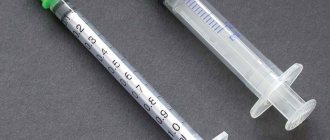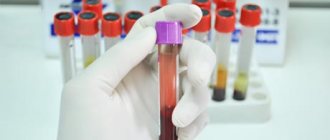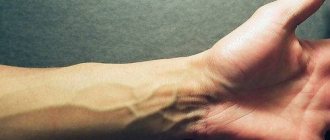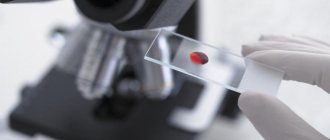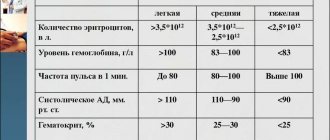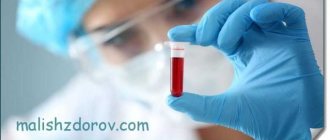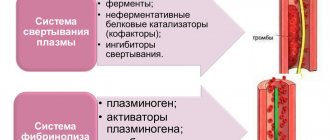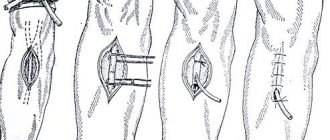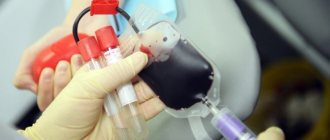Today it is impossible to imagine medicine without biochemical studies of serum or blood plasma, since the tests performed are more informative for doctors than the patient’s complaints and well-being. Almost immediately after seeking help at a clinic or entering a hospital for treatment, the doctor prescribes studies of this kind. However, obtaining reliable data regarding the patient’s health status is based not only on modern equipment and high-quality reagents from medical laboratories. Proper blood sampling from a vein is of great importance. The manipulation algorithm and preparation of the patient for the collection of biological fluids are of paramount importance in making a diagnosis and further prescribing the correct treatment.
Preparing for the study
You should not immediately after a conversation with your doctor run to a biochemical laboratory or manipulation room to donate blood. Most likely, nothing will be taken in the manipulation room, since it is necessary to undergo little training in order to draw blood from a peripheral vein. The algorithm for this preparation is as follows. The day before the procedure, you should not have a very heavy dinner.
Meals should be light, and dinner should be no later than 19 or 20 pm. Too dense, fatty, spicy food can change the biochemical parameters of the blood, which can lead to incorrect results. In addition, in the morning, before the study itself, you should not have breakfast, since blood is donated on an empty stomach.
The price of biochemical analysis, and where is the best place to do it?
The listed biochemical parameters are determined in any private or public clinical diagnostic laboratory. Most laboratory sites use high-precision methods and equipment. Often, the reference values for each analysis are indicated on the study form in accordance with the age and gender of the patient.
Any laboratory, public or private, has a set of reagents and personal computers. Norms for biochemical parameters can vary greatly. If there is a need to be examined again, the examination should be carried out at the same time of day and in the same laboratory department.
The price of a biochemical analysis depends on what blood parameters need to be determined. The price of one indicator is from 100 to 700 rubles.
Doctor: Olga Shishkina ✓ Article checked by doctor
Equipment required for collecting blood from a vein
Depending on what equipment will be used to draw blood, the list of necessary materials may vary, since the technique for collecting blood from a vein is slightly different. The manipulation algorithm remains almost the same. When collecting using a regular syringe you will need:
- tourniquet;
- cotton wool or cotton swabs;
- antiseptic (70% alcohol);
- disposable sterile syringe;
- sterile medical tray;
- napkins;
- medical clothing;
- test tubes
If the algorithm for collecting blood from a vein using a vacuum system is performed, there is no need for test tubes and a disposable sterile syringe. In addition, the manipulation room should contain: a chair for the patient, a refrigerator, and racks for installing test tubes.
Taking blood for biochemical analysis algorithms
If you are not yet a user of the IS “PARAGRAPH”, then become one. Become a user of IS "PARAGRAPH"
Why do you need the “Court Decisions Database”? see more details
Analysis of the information contained in the database will help the lawyer to foresee the consequences of his legal decisions and not bring the case to court.
Helps to build a competent litigation strategy based on the study and analysis of decisions already available in the database on similar cases.
Helps check the “purity” of partners and contractors:
- – did you take part in legal proceedings?
- – as who? (Plaintiff, defendant, third party, etc.)
- – on what matters?
- – did you win or lose?
The most complete database - more 7 000 000
documents
The database contains cases:
- – civil proceedings
- – administrative proceedings
- – criminal cases of open court proceedings
Simple and convenient search for documents:
- – by territory
- - by court
- - by date
- - type
- - by case number
- - on both sides
- - according to the judge
We have developed a special type of search - SEARCH BY CONTEXT
, which is used to search the text of court documents using specified words. All documents are grouped into
individual cases
, which saves time when studying a specific court case. Each case is attached with
an information card
that contains brief information on the case - number, date, court, judge, type of case, parties, history of the process, indicating the date and action taken.
If you are not yet a user of the IS “PARAGRAPH”, then become one. Become a user of IS "PARAGRAPH"
Why do you need the section “Responses from government agencies”? see more details
1. Responses of government bodies to specific questions from citizens and organizations in various sectors of activity. 2. Your practical source for applying the law. 3. The official position of government bodies in specific legal situations requiring decisions.
The section contains all the responses of government bodies, which are posted on the “Open Dialogue” portal of the Electronic Government of the Republic of Kazakhstan. Questions and answers are included in the IS “PARAGRAPH” unchanged in accordance with the original, which will allow you to refer to them when situations arise that require confirmation and justification of your position (when interacting with government agencies, among other things). Unlike the E-Government portal, the answers from government agencies in the PARAGRAPH IS section are equipped with additional search mechanisms that allow you to search by:
- – subject matter;
- – date;
- - auto RU;
- – question number;
and also conduct a full-scale contextual search in questions and answers - both individual words and phrases in the form of a phrase.
We are confident that the new capabilities of the PARAGRAPH IS will make your work even more effective and fruitful!
source
General rules for preparing for the blood sampling procedure
Before performing venipuncture, the algorithm for collecting blood from a vein must be brought to the attention of medical personnel. Before performing the practical part, you must wash your hands, which is mandatory to maintain hygiene rules. After this, you should put on a gown and other protective medical clothing. After the medical staff is ready to perform the procedure, the patient is invited to the manipulation room. The direction for blood sampling is registered, and the patient’s identity is also identified. After this, an explanation of the upcoming procedure is carried out, the patient is seated in a chair, the necessary equipment is prepared and the venipuncture procedure proceeds.
Preparing the venipuncture site
After all the equipment is prepared, the nurse begins the procedure of drawing blood. For this, the ulnar vein is most often used (due to its superficial location and accessibility). It is necessary to select the proposed site for puncture, examine it and palpate the vessel. After this, apply a tourniquet above the site of the intended puncture. The tourniquet must be applied in such a way that it does not press on the arterial vessels and the outflow of blood through the veins stops. Next, you should ask the patient to clench the hand into a fist several times to increase blood flow. If for some reason the patient is unable to clench his hand into a fist, a warm heating pad can be applied to the intended venipuncture site. Heat will cause blood vessels to dilate and blood flow will increase.
Afterwards, the puncture site is disinfected. To do this, using a sterile gauze or cotton swab, treat the skin surface with circular movements directed from the center to the periphery. The treatment is performed twice and wait until the antiseptic solution dries completely. After treatment, palpation of the venous vessel is not performed.
Preparing the patient and the technique of taking blood from a vein for biochemical research methods.
Equipment:
sterile needle with a diameter of 1.5 mm, length 40 - 60 mm, sterile disposable syringe with a volume of 10 ml, sterile cotton balls, napkins, bandage, 70% alcohol, tourniquet, oilcloth pad, rack with test tubes (dry test tubes and with anticoagulant), rubber stoppers, container for transportation, directions, journal for recording tests, containers with disinfectant solution, disposable gloves, mask.
Greet the patient and introduce yourself.
Explain to the patient the purpose and progress of the upcoming study and obtain informed consent for the procedure.
Inform the patient one day in advance about the upcoming study.
Explain to the patient the rules for upcoming preparation for the study.
Avoid breakfast, taking medications, physiotherapy, massage, gymnastics, X-ray examinations, and smoking on the morning of the study.
Avoid taking contraceptives.
Recommend that the patient consult a doctor about taking prescribed medications before having a blood test.
Ask the patient to repeat the preparation for the study, if necessary, provide written instructions.
Inform what consequences will result from violating the nurse’s recommendations.
Inform the patient about the exact time and place of the study.
Prepare a referral for the study the day before by filling it out in the form (indicate the name of the healthcare facility, department, ward number, laboratory, type of analysis (patient’s full name, nurse’s signature, date of collection of the material, medical history number, policy number)
Technique for taking blood for biochemical testing.
Place the patient in a comfortable position.
Place a cushion under your elbow.
Wash your hands hygienically, wear a mask and sterile gloves.
Apply a tourniquet through a napkin to the middle third of the shoulder, so that the loop points down and the ends point up; the time for applying a tourniquet should not exceed 1 minute.
Treat gloves with 70% alcohol twice.
Treat the area of the elbow bend with two cotton balls moistened with 70% alcohol (move the ball from bottom to top). Treat a large surface with the first ball, and the immediate puncture site with the second.
Algorithm for collecting blood from a vein using a disposable syringe
To carry out the procedure, prepare the necessary equipment and open the syringe. In this case, the package with the syringe is held in the left hand with the transparent side facing away from you, with the spout facing down. The opening is performed by immediately tearing the paper part against the syringe piston by moving the right hand away from you. Next, without completely removing the syringe from the package, put on an injection needle. To do this, you need to take the product by the piston and side ears and insert it into the needle. After the injection needle is placed on the syringe nozzle, the packaging can be completely removed.
The protective cover is removed from the needle and the vein is punctured. At the moment the needle penetrates the vessel, a sensation of entering a void occurs, and a small amount of blood appears in the nose of the syringe. The position of the needle is controlled by pulling the piston towards itself, while venous blood should flow into the syringe. Next, the algorithm for collecting blood from a vein is as follows. If blood flows in, the position of the syringe and needle relative to the vessel is fixed, and they slowly continue to pull the piston towards themselves until the required amount of blood is obtained. After this, remove the tourniquet and remove the syringe and needle from the vessel. The puncture site is pressed with a sterile cotton or gauze swab soaked in an antiseptic solution.
The patient is asked to bend his arm at the elbow joint. The needle from the syringe is dropped into a container, and the blood is poured along the wall into a test tube. After all the blood is in the test tube, the syringe is thrown into a container with a disinfectant. To summarize the above, it must be said that if blood is taken from a vein, the algorithm of action and skills must be well developed in theory and in practice.
Algorithm for collecting blood from a vein using a vacuum system
Today, technological progress, including in medicine, does not stand still. Instead of an ordinary syringe, you can draw blood from a vein using a vacuum system. The algorithm is not very different from that when collecting blood using a syringe. When collecting blood using a vacuum system, prepare a needle for puncture and insert it into the holder. Grasping the patient’s forearm with the left hand 3-5 cm below the intended needle insertion site, stretch the skin and perform venipuncture. In this case, the needle together with the holder is inserted at an approximate angle of 15 degrees.
If it enters a vein, blood appears in the indicator chamber of the needle. After this, the tube is placed in the holder and blood is drawn from the vein using a vacuum system. The algorithm is as follows: the position of the needle and holder in the vessel is fixed, and with the right hand, by pressing on the bottom of the test tube, it is installed in the holder. If the tube is in good condition, blood begins to flow into it after installation.
Once filled, the test tube is removed from the holder. When collecting blood into several tubes, the correct order of filling must be observed. At the end of the blood sampling procedure, the needle and holder are removed, a sterile cloth moistened with an antiseptic is applied to the puncture site, or a bactericidal patch is applied.
Tubes for blood collection are marked accordingly: they indicate the patient's first and last name, his age and identification number. If an automated system is used for biochemical analysis, an identifying barcode is affixed to the test tube. This is what the algorithm for collecting blood from a vein with a vacutainer looks like.
It should be noted that, as in the case of collecting blood using a syringe, as soon as the vein is punctured and blood begins to flow into the syringe or tube, the tension of the tourniquet should be loosened. Prolonged compression can lead to changes not only in the protein and electrolyte composition of the blood, but also in coagulation parameters and gas composition. When carrying out vacuum blood sampling from a vein for the first time, the algorithm of actions must be debugged on a mock-up for training in order to avoid mistakes during real execution.
Standards for biochemical analysis - explanation
| Index | Normal in adults | In children under 14 years of age | |
| in men | among women | ||
| Total protein (tp) | 60 – 85 g/l | 60 – 85 g/l | 45 – 75 g/l |
| Albumin (albu) | 35 – 50 g/l | 35 – 50 g/l | 40 – 55 g/l |
| Total bilirubin (tbil) | 8.5 – 20.5 µmol/l | 8.5 – 20.5 µmol/l | up to 250 µmol/l (newborns) |
| Indirect bilirubin (dbil) | 1 – 8 µmol/l | 1 – 8 µmol/l | up to 210 µmol/l |
| Direct bilirubin (idbil) | 1 – 20 µmol/l | 1 – 20 µmol/l | up to 40 µmol/l |
| Aspartate aminotransferase (alt) | up to 37 units/l | up to 31 units/l | up to 30 units/l |
| Alanine aminotransferase (ast) | up to 45 units/l | up to 35 units/l | up to 35 units/l |
| gamma glutamine transferase (ggt) | up to 55 units/l | up to 40 units/l | up to 45 units/l |
| Alkaline phosphatase (alp) | 30 – 130 units/l | 30 – 110 units/l | Up to 350 units/l |
| Triglycerides (trig) | 0.4 – 1.8 mmol/l | 0.4 – 1.8 mmol/l | 0.5 – 2 mmol/l |
| Cholesterol (chol) | 3.5 – 5.5 mmol/l | 3.5 – 5.5 mmol/l | 3.5 – 7.5 mmol/l |
| VP lipoproteins (hdl) | 1.7 – 3.5 mmol/l | 1.7 – 3.5 mmol/l | 1.7 – 4.5 mmol/l |
| Fibrinogen (fg) | 2 – 4 g/l | Up to 6 g/l (during pregnancy) | 1.2 – 3 g/l |
| Amylase (amyl) | 25 – 125 units/l | 25 – 125 units/l | 25 – 125 units/l |
| Uric acid | 210 – 420 µml/l | 150 – 350 µml/l | 150 – 350 µml/l |
| Creatinine (crea) | 62 – 120 µml/l | 55 – 95 µml/l | 50 – 100 µml/l |
| Urea (urea) | 2.8 – 7.2 mmol/l | 2.8 – 7.2 mmol/l | 1.8 – 6.2 mmol/l |
| C-reactive protein (crp) | up to 0.5 mg/l | up to 0.5 mg/l | up to 0.5 mg/l |
| Antistreptolysin O (also, aslo) | up to 200 units/l | up to 200 units/l | up to 200 units/l |
| Glucose (glu) | 3.8 – 6.3 mmol/l | 3.8 – 6.3 mmol/l | 3.8 – 5.3 mmol/l |
Complications that arise when taking blood from a vein
When performing venipuncture, special attention should be paid to possible complications after the procedure. To avoid them, it is necessary to carefully adhere to the rules of asepsis and antisepsis, and also strictly follow the venipuncture algorithm. Only strict adherence to the algorithm will help to avoid hematomas and the occurrence of infectious and inflammatory processes at the injection site.
